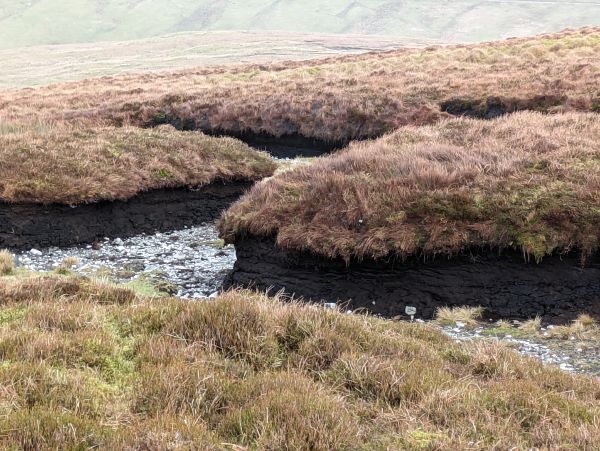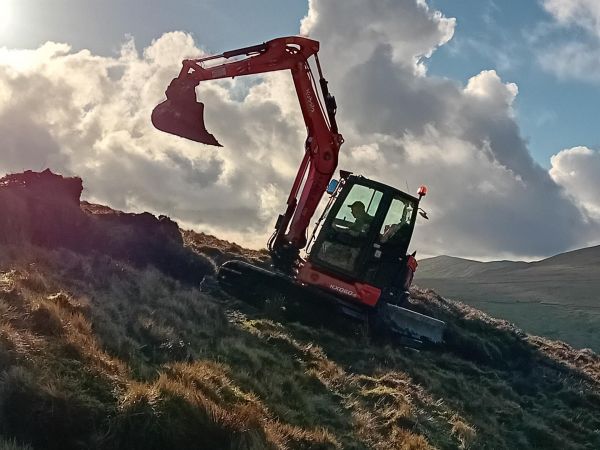Peatlands are a natural ally against climate change and a Manx project is mapping and restoring these key habitats. Sarah Hickey, Peatland and Upland Carbon Officer, tells us more.
Our hills are covered in a blanket of peat, which started forming around 5000 years ago. The reduction of tree cover, due to human disturbance and the onset of a cooler, wetter climate, created conditions suitable for peat formation.
Peat forms when damp, acidic, conditions inhibit the decomposition of vegetation, which then builds up over time as carbon-rich peat.
On the hills, sphagnum mosses help to create these conditions as they can store around 20 times their own weight in water, soaking up rainwater like a sponge. In lowland areas, such as the Ballaugh Curragh, groundwater is the main cause of waterlogged conditions, although sphagnum is often present.
Peatlands are really important for many reasons. They support a variety of habitats, from blanket bog, to heath and curragh, which support some really interesting plant and animal species. The sundew is a carnivorous plant which traps its prey on sticky ‘dew’ drops, gaining extra nutrients that are not available in the acidic peat. The mountain hare can be found in upland areas, most noticeably in the winter when its coat turns white - an adaptation to colder, snowier winters. A number of increasingly rare bird species are also found in peatland habitats, including curlew, hen harrier, red grouse, short eared owl, common snipe, skylark and meadow pipit.

Eroding peatland
Despite only covering 3% of the global land surface, peatlands store more carbon than all other types of terrestrial vegetation combined.
This carbon can be stored for thousands of years, but damage to our peatlands results in the loss of carbon. It has been estimated that damaged peatlands are responsible for nearly 5% of anthropogenic CO2 emissions globally, so it is really important to protect and repair our peatland.
The Manx Peatland Project has been established to map the extent and depth of peat, identify areas that can be restored and undertake the restoration and protection of peatland on the Isle of Man. We have been working to restore three sites this winter, using a range of techniques.
Beinn-y-Phott and Mullagh Ouyr are hills where peat was traditionally cut for fuel. Unfortunately, this practice lead to the erosion of peat from exposed peat ‘hags’, so we have a contractor ‘re-profiling’ the hags. This involves using a low ground pressure digger to reduce the angle of the hag so that it is easier for vegetation to become established.

Reprofiling peatland hags
We’ve also installed boardwalk constructed using locally grown and processed timber near to Black Hut (see main photo). This will protect the bog from erosion. Future work at this site will include reducing the flow of water through artificial drains dug across the bog, in order to keep the bog wet and reduce the erosion of peat.
There are multiple benefits of the planned restoration work. As well as protecting the carbon stored in peatlands, the work will improve the condition of habitats, benefitting the animals that use them. Peatland habitats in good condition can help slow the flow of water over the land which, along with drain blocking, can reduce the severity of downstream flooding.
Keeping the water on the hills can also help reduce the chance and severity of wildfires and protect habitats from the impacts of drought. Work to improve access through peatland, while protecting vulnerable habitats, also enables people to enjoy these areas for recreation.
Follow the project on Instagram and X @ManxPeat and on facebook at Manx Peat Partnership.


